Last week I had the honor of visiting multiple schools and giving demonstration lessons in 2nd and 3rd grade classrooms. For each lesson, there were 10-15 teachers observing. Afterwards we debriefed about methodology and evidence of student learning. Some amazing insight was gained – as well as a sense of affirmation for what they are attempting in the classroom already. Kudos to these teachers!!!!
The objective of all the lessons was close reading informational text with an essential question as our focus for determining what was important. Across the lessons, I found myself implementing the same tried and true approaches over and over again as far as instructional methodology. These were whole group lessons. I prefer to do this in small groups, but there is importance in doing this a few times a week with a whole group – developing a sense of community and giving striving readers access to grade level text. The lessons were 20-25 minutes.
1) The text was on the document camera or projected with a Smart board and all students, sitting on the carpet near me, had their own copy of the text on a clip board. They also had a pencil so they could do their own annotations.
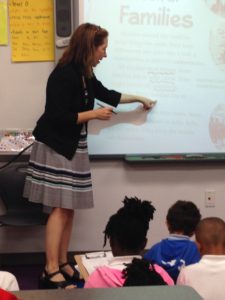
2) The essential question for close reading was posted and I referred to it over and over with prompts like, “In this sentence, did we read any details that help us answer this question?” This prompt does not always work like this for every text – sometimes you have to read a larger chunk of text to get at the essential question OR you may just be making sense of the text at the sentence level and later asking how what you learned helps you understand the essential question. I just find that a “driving question” helps the students stay focused and not overwhelmed by how much content there is in a text.
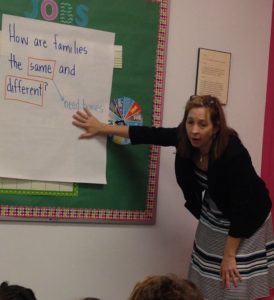
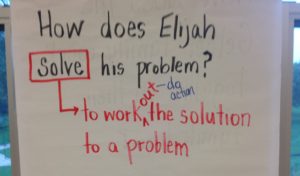
3) I rarely call on individual students to share. Instead, I ask a question and when there are several hands up in the air, I ask students to turn and talk with a partner or in small groups or to read, annotate, or write independently. Then I am on my knees or sitting on the floor, listening in, assessing, conferring and coaching. I can’t not be with the students – near them, embracing their thinking and nudging them forward. When we regroup, I ask a student I worked with to underline and annotate on the projected text or I ask a group to share how they had a conversation. These are individuals or groups I coached – so I’ve set them up to share their success.
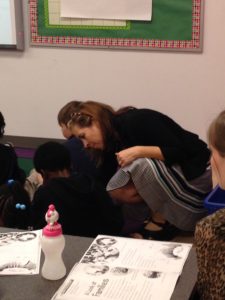
4) The students ALWAYS write at the end of the lesson – even if it’s just one or two sentences on a sticky note. I want to know what they are learning from close reading and how they would answer our focus question as a result. After I collect their annotated texts and sticky notes, I read them and look for trends in answers. Are they able to answer the question? Are they able to use key details from the text and paraphrase? Are they able to reveal how they extended their thinking through this experience? What the students write can be used to write longer responses later or it can just serve as a formative assessment for me – to help me determine where to go next and who to check in with during the following lesson.
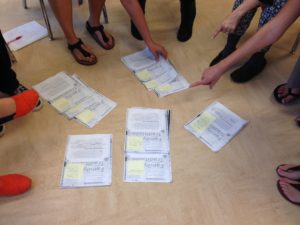
Okay…so much more to say about last week. LOVED being with the kids and the teachers – in urban schools with day-to-day trials and tribulations. Have to laugh – one day we had a fire drill in the pouring rain!!!
Hope this helps.
Sunday
